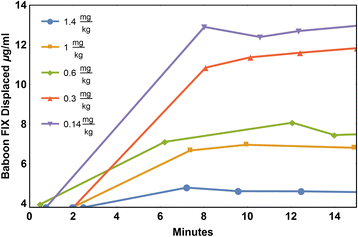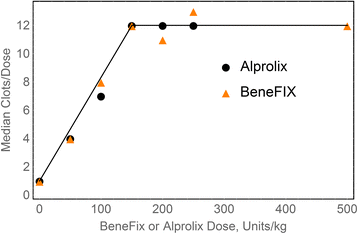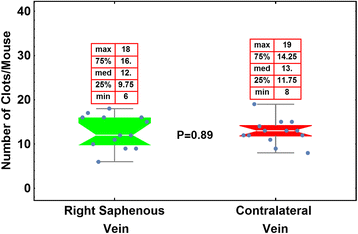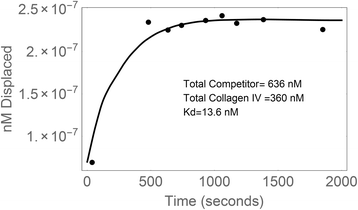Extravascular FIX and coagulation
- PMID: 27766061
- PMCID: PMC5056527
- DOI: 10.1186/s12959-016-0104-2
Extravascular FIX and coagulation
Abstract
This review summarizes the evidence that collagen IV binding is physiologically important, and that the extravascular compartment of FIX is composed of type IV collagen. As we have previously demonstrated, 7 days post-infusion, FIXWT (BeneFIX) is able to control bleeding as well as the same dosage of Alprolix in hemophilia B mice, tested using the saphenous vein bleeding model (Alprolix is a chimeric FIX molecule joined at its C terminus to a Fc domain). Furthermore, we have shown that in hemophilia B mice, doses of BeneFIX or Alprolix (up to a dose of 150 IU/kg) have increased bleeding-control effectiveness in proportion to the dose up to a certain limit: higher doses are no more effective than the 150 IU/kg dose. These studies suggest that in hemophilia B mice, tested using the saphenous vein bleeding model, three things are true: first, extravascular FIX is at least as important for coagulation as is circulating FIX; second, measuring circulating levels of FIX may not be the best criterion for designing new "longer lasting" FIX molecules; and third, trough levels are less diagnostic for FIX therapy than they are for FVIII therapy.
Keywords: Coagulation; Collagen IV; FIX; Hemophilia B.
Figures





References
-
- Schulman I, Smith CH. Hemorrhagic disease in an infant due to deficiency of a previously undescribed clotting factor. Blood. 1952;7:794–807. - PubMed
-
- Birch C. Hemophilia, clinical and genetics aspects. 1937.
Publication types
LinkOut - more resources
Full Text Sources
Other Literature Sources
Research Materials

